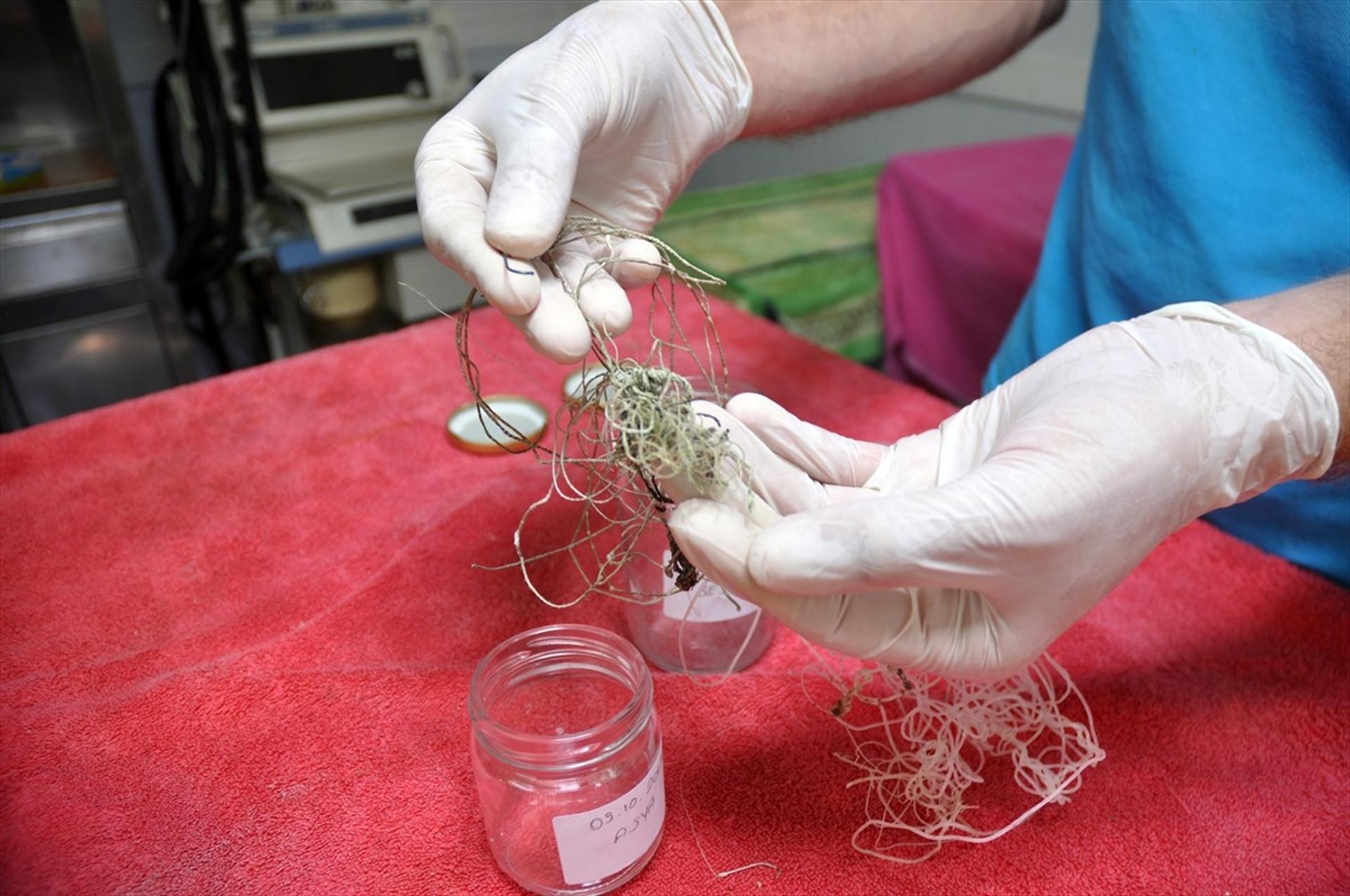
Plastic material has been found in 60 percent of the digestive systems of dead and injured Caretta carettas within the scope of a project conducted jointly with the countries that have coasts to the Mediterranean.
It has been reported that approximately 40,000 Caretta carettas die annually in the Mediterranean.
Striking results have been found in the first leg of the project, indicating the plastic pollution in the Mediterranean.
The Sea Turtles Research, Rescue and Rehabilitation Center (DEKAMER) is carrying out the EU-funded project, known as INDICIT, with Spain, Portugal, Italy, France, Tunisia, Greece and Cyprus.
The head of DEKAMER, Pamukkale University Department of Biology Professor Yakup Kaska, pointed out that although a sea turtle was rescued from nets or needles, it was not enough for it to survive. He said that the fishing lines found in their digestive system pose a great threat to the life of sea turtles.
Stating that approximately 60 injured or dead sea turtles come to DEKAMER annually, Kaska said, “Within the scope of our EU project, foreign materials in their digestive system are examined one by one. A total of 1,100 Caretta carettas have been examined so far.”
Kaska noted that the things that came out of their bodies were mostly plastic pieces, products containing foam, small foreign materials such as fishing lines and tin pieces apart from grasses, which is a part of their food chain.
As a result of the investigations made by eight countries, Kaska said that plastic materials were found in 60 percent of their digestive systems during the treatment of injured turtles and as a result of the necropsy of those who were found dead.
“Turtles in Turkey have less plastic than those in other countries. The rate in Greece and Tunisia is a little more than ours, like 60-65 percent. In other countries, it is close to 70 percent because the pollution rate is higher as there is also pollution coming from the Atlantic and Gibraltar.”
Kaska also said that the reported number of dead Caretta carettas in Turkey was around 200 annually.